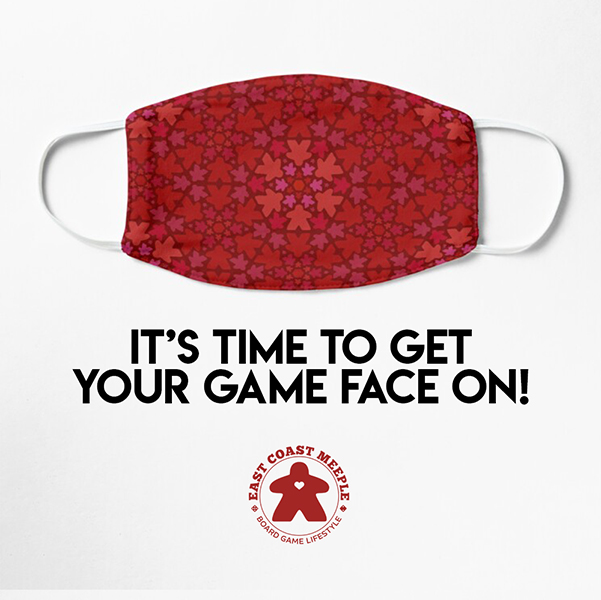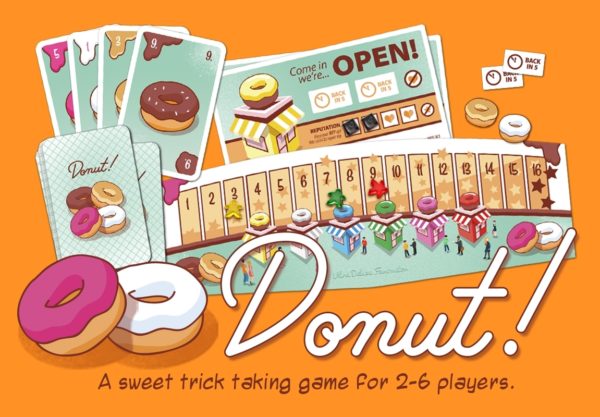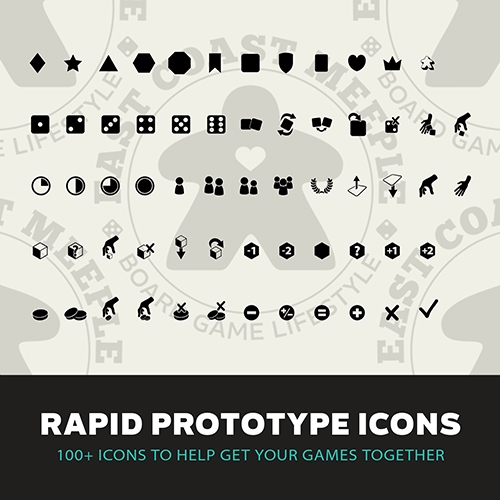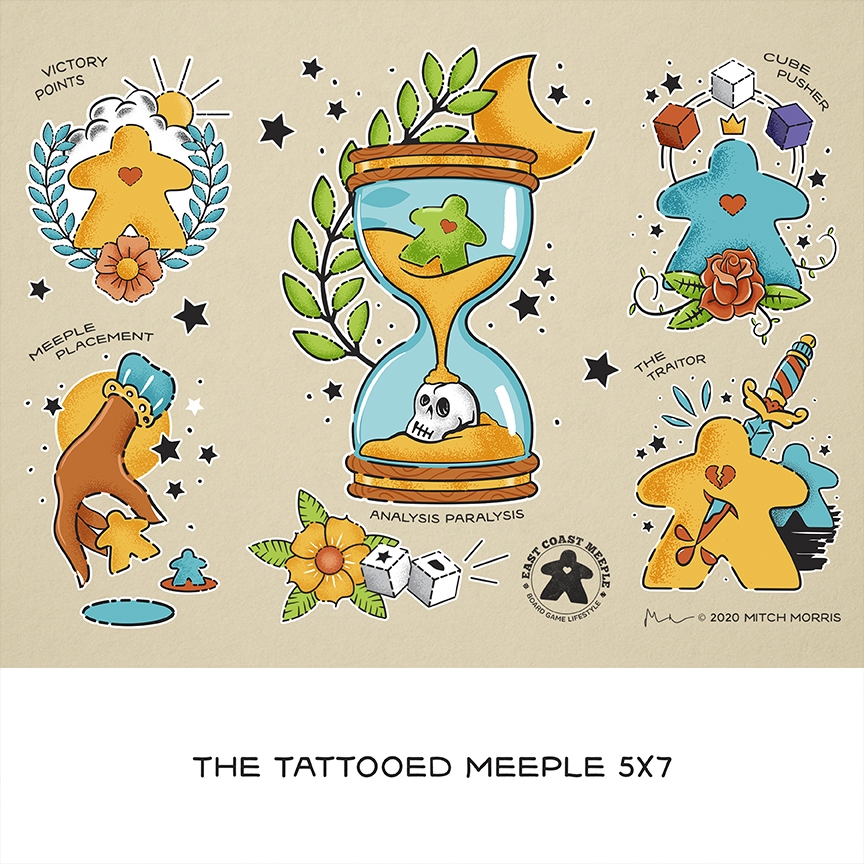

Thomassie Mangiok
An interview
The board game industry is full of fantasy “sword and sorcery” games and historically-themed games with settings in well-known locations like Ancient Rome or Aztec ruins. Don’t get me wrong, I love those types of games and I think there will always be a market for them, but the industry is rapidly changing. Exciting games, full of new ideas and settings, are popping up every day.
Nunami by Inuit artist Thomassie Mangiok is one of those games. When an article appeared on my computer screen one day announcing that Nunami was the first Inuit- designed board game and that it had a positive environmental message, I immediately wanted to know more. I reached out to the designer of the game, Thomassie Mangiok and he was kind enough to answer some questions about himself and his game.
Thomassie is an artist, filmmaker and graphic designer, an educator and app designer, and so much more. Thomassie’s work and art have focused on promoting Inuit culture and his recent board game Nunami successfully funded on Kickstarter in October 2019 and has been making its way to board game tables ever since.
~From the Publisher~
NUNAMI
Nunami is the first Inuit-designed tabletop 2 or 4 player game. It can be played indoors and outdoors. The length of a game is about 15 minutes and each game is an enriching experience that requires critical thinking. Like life, it starts simple, and then becomes challenging as you develop your Nunami skills. The game is meant to show that managing our place of living is important through a fun game. Players can win only if they don’t over populate their bases with their units. Nunami is an incredible game; simple at first glance, but providing many possibilities

~This is not an affiliate link. ~
(Steve) Hello Thomassie! Thanks so much for taking the time to talk to me.
(Thomassie) Hello there Stephen, I’m happy to take the time to answer your questions.
First of all, congrats on successfully funding your game through Kickstarter. That’s no small feat. Can you tell me a bit about your game, Nunami, for anyone who may not have heard about it?
Nunami is the first Inuit designed board game, the game promotes strategy and is as dynamic as life is in the outdoors. I’m sharing our values through Nunami giving players a glimpse of my experience in the tundra. I’m very happy that it’s doing well, it shows that anyone can make beautiful products and then share them with others.
I love the positive environmental message your game promotes with its emphasis on cohabitation and conservation. Can you speak a bit about how these ideas developed with the game?
I’ve always been sensitive to the wellbeing of others, especially since I got to grow up having access to life in nature respecting our cultural and spiritual values. I’m happy to share the values with my children, just as much as I’m happy to contribute to our society. I admit that Star Trek had an influence when I was young, it showed that the future doesn’t have to be like today and that a currently dominant culture isn’t always the right one for us. I designed Nunami in such a way that each round of game feels different, the design incorporates the values I cherish and my love of being in the tundra.
I really hope to see more games showcasing Indigenous cultures, stories, and settings. How important was it for you to include your culture in your game’s design?
The focal point in my creations is meant to strengthen our Inuit culture’s and language’s presence. I’ve made magazines, apps, plastic syllabic character pieces, and more because I didn’t see anyone else making them. Nunami is now the only board game in the world to have instructions in Inuttitut. Nunami’s gameplay is also directly based on our culture, and it is now showing the world a new way to have fun while sharing our experiences in the tundra through a game. Our culture has developed to help us adapt to our environment; I believe we should enhance our traditional culture instead of replacing it so we can live in health with our environment. Nunami does its own part to make space for our Inuit culture, and it allows me to share my love of life in the tundra with everyone.
Are you working on other game designs or do you have another story you are hoping to tell through a board game?
Still in my mind, I’ve designed what I believe to be an engaging game, but I’m first committed to finishing some of my ongoing projects.
Nunami has a really beautiful aesthetic appeal. Can you tell me a bit about the hexes and the beautiful artwork?
I designed Nunami’s hex boards addressing the card’s needs to be able to interact with their surroundings, the boards also needed to hold the triangular cards and to be in physical contact with other boards. The number of slots on the hex boards is an even number in order to promote balance since the play with cards is meant to tip that balance anyway. The board’s height and the space margin close to its extremity are designed not only to look darn cool but also to facilitate the placing of the triangular cards.
Inuit art is directly inspired by our surroundings; there are curves everywhere in the tundra. We’ve traditionally applied basic geometric shapes, dots, and lines to separate what naturally occurred and what we made. I’ve developed my art style over time after having been exposed to Inuit sculptures, prints, drawings, clothing, and paintings. I’ve always loved my aunt’s husband’s sculptures: semi-abstract, smoothed-out characters that are always in action, I imagined what they were doing. I have one of his works in my office to inspire me, and then my mother and my aunt have their own styles to inspire me.

Have you always been interested in board games? What was your introduction to the hobby?
I love to play on any medium, but board games have a special place in my heart because of the memories of my aunt playing regularly with her friends. Chinese checkers might’ve been the game that introduced me to playing board games. We didn’t have many choices back then, our only store was small and we lived in a far and isolated community of Quebec.
Is game design something you’ve been doing for a while or is this a new passion of yours?
Game design is new to me, but I’ve been making different things in my spare time. I dream of just designing, creating, and then sharing if I could just do that.
I understand that Ivujivik is a pretty small community. Do you have a group of gamers that you can test your designs on or play other board games with?
There’s a very small group of people that I get to try games with, this is largely due to my work that keeps me busy. But I’m happy to know that people do play different games at home, one of which asked to work with me on a Nunavik version of Risk.
Oh wow. A Nunavik version of Risk is a really interesting idea. What other games have you been playing these days? Any favorites?
My wife and I played Duel in January; we’re trying to find Lost Cities to play this month but I think someone is borrowing it. We’re competing to see who won the most each month. And since January with friends, we played Code Names, Nunami, and Azul. It’s hard to say if I have a favorite game, I think it depends on moods. Right now, I might be in the mood for a Game of Throne version of Catan if our friends are willing to play. (Today really feels like a cold winter).
Like myself, I read that you are an educator. Apart from an after-school board game club, I’ve yet to bring gaming into the learning environment, although it’s something I’ve always wanted to do. Have you been able to incorporate board games into a classroom setting?
We had one teacher introducing board games to our students during one term. We’ve also played Nunami to show our students that there’s math through play. We didn’t get much chance to do more, there are too many other tasks that need to be completed.
Thanks so much for taking the time to answer these questions! I wish you all the best and look forward to seeing more from you.
Thank you as well, I’m happy to share with you.
You can find out more about Nunami by visiting BGG or the Nunami site. There is a 2 player gameplay video here.



















0 Comments